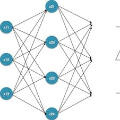Recently, rate-1/n zero-terminated (ZT) and tail-biting (TB) convolutional codes (CCs) with cyclic redundancy check (CRC)-aided list decoding have been shown to closely approach the random-coding union (RCU) bound for short blocklengths. This paper designs CRC polynomials for rate- (n-1)/n ZT and TB CCs with short blocklengths. This paper considers both standard rate-(n-1)/n CC polynomials and rate- (n-1)/n designs resulting from puncturing a rate-1/2 code. The CRC polynomials are chosen to maximize the minimum distance d_min and minimize the number of nearest neighbors A_(d_min) . For the standard rate-(n-1)/n codes, utilization of the dual trellis proposed by Yamada et al. lowers the complexity of CRC-aided serial list Viterbi decoding (SLVD). CRC-aided SLVD of the TBCCs closely approaches the RCU bound at a blocklength of 128. This paper compares the FER performance (gap to the RCU bound) and complexity of the CRC-aided standard and punctured ZTCCs and TBCCs. This paper also explores the complexity-performance trade-off for three TBCC decoders: a single-trellis approach, a multi-trellis approach, and a modified single-trellis approach with pre-processing using the wrap around Viterbi algorithm.
翻译:暂无翻译




